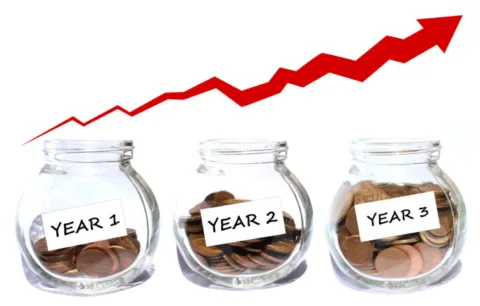In the world of finance nothing ever seems fair.
Some are lucky enough to be enrolled in an employer-sponsored retirement program. But where do you go if you have no such option? What should you do if you want to start planning for your post-career years on your own?
It’s not a simple question to answer – because you will have you own lifestyle and your own timeframe to consider.
But if you’re just getting started in the workforce or you don’t make a lot of income, then opening a MyRA may be the best way to start a retirement account on your own!
What is MyRA?
MyRA (My Retirement Account) is designed to help you start saving for retirement now – rather than later.
There are no costs or fees associated with this service.
There’s no risk of losing money.
It’s a free service provided by the U.S. government that was started in November 2015.
MyRA is a simple and safe option.
How It Works
Anyone can get started online by putting as little as $25 toward your retirement.
Then, you can continue adding money to your personal retirement fund as often as you want – the minimum addition is only $5.
There are a few very basic requirements before you can begin to invest, though:
- First, you must have “earned income” for that year in the amount that you decide to put into you MyRA account. Earned income is any taxable money you receive from your employer – like wages and tips. If you’re self-employed, that money is also considered earned income. So, if you end up making $2,000 in 2016 for example, you cannot contribute $2,500 to your retirement account. You could only contribute up to $2,000, in that case.
- Second, there is a $5,500 contribution limit for the year. That means you can never put in more than that amount in any given year – even if you want to make up for previous years. If you haven’t saved much in the past, at least you can start a retirement account now.
- Third, the MyRA is meant to be a starter retirement account. It’s not meant for high-income earners. When an account has reached a value of $15,000 it will be automatically transferred to a private institution. However, you’re not forced to stay with the MyRA account until that sum is reached. You can transfer the full balance of your starter retirement account at any time to a private institution.
- And finally fourth, only one account is offered per person in their lifetime. Once the account is closed and the money is transferred, you cannot open another one MyRA account.
Is MyRA Better Than A Traditional Roth IRA?
Quite simply, it may not be. That answer depends on you, the investor and your personal circumstances.
However, if you’re just getting started with retirement savings, or you’re unable to contribute much money, then chances are a MyRA may be the best option for you.
The interest rate you receive on your MyRA account will depend on the rate of a United State Treasury bond – which is a rate that fluctuates from year to year. Last year, the interest earned was just over 2%. If you were to put your money in a savings account with a bank, the interest rate would have been much less than that.
There are 2 important differences between a MyRA and other kinds of retirement accounts – like Roth IRAs, Traditional IRAs or 401(k)s. With a MyRA, you invest only in a security backed by the U.S. Treasure. The return on the security will vary, but has averaged 3.19% over the past 10 years. You will probably earn less over time in a MyRA than you would if you invest in stocks and bonds through another kind of retirement plan. But your account is guaranteed not to lose money. Source
A Few Other Points To Consider
#1 – A MyRA account makes saving for retirement simple.
Yes, with a traditional Roth IRA you can invest in mutual funds and stocks, but that’s not what the MyRA was set up for. Think of it as a bridge connecting an empty retirement account to a Roth IRA. Eventually, you will get to the Roth IRA, but you need a certain amount of money to get you there.
#2 – If you want to have both a MyRA and a Roth IRA, you can.
The combined contributions of the 2 accounts must not exceed $5,500, and the amount contributed must not exceed your total earned income for that year.
#3 – Let the government be your tutor.
The Internal Revenue Service has a helpful website with information about retirement planning, and how these investments will affect you, as a taxpayer, at the end of the year. There are also detailed pages about how to avoid scams on the Internet and how to become literate in basic financial products.
#4 – You can fund your MyRA account through a:
- Payroll deduction – You can set up automatic direct deposit contributions to MyRA through your employer.
- Checking or savings account – You can also fund a MyRA account directly by setting up recurring or 1-time contributions from a checking or savings account.
- Federal tax refund – At tax time, you can direct all or a portion of your federal tax refund to your MyRA account.
According to many polls taken about personal savings in America, many people don’t seem to have retirement on their mind.
Opening a MyRA or other type of retirement account can get you started on a path to financial stability… right now.
It’s obvious that Social Security will not be enough for most people to survive on. And MyRA is one awesome tool that adds to that deficit.
Or, you could always depend on your adult children to take care of you once you leave your job. (Yeah, right.)






